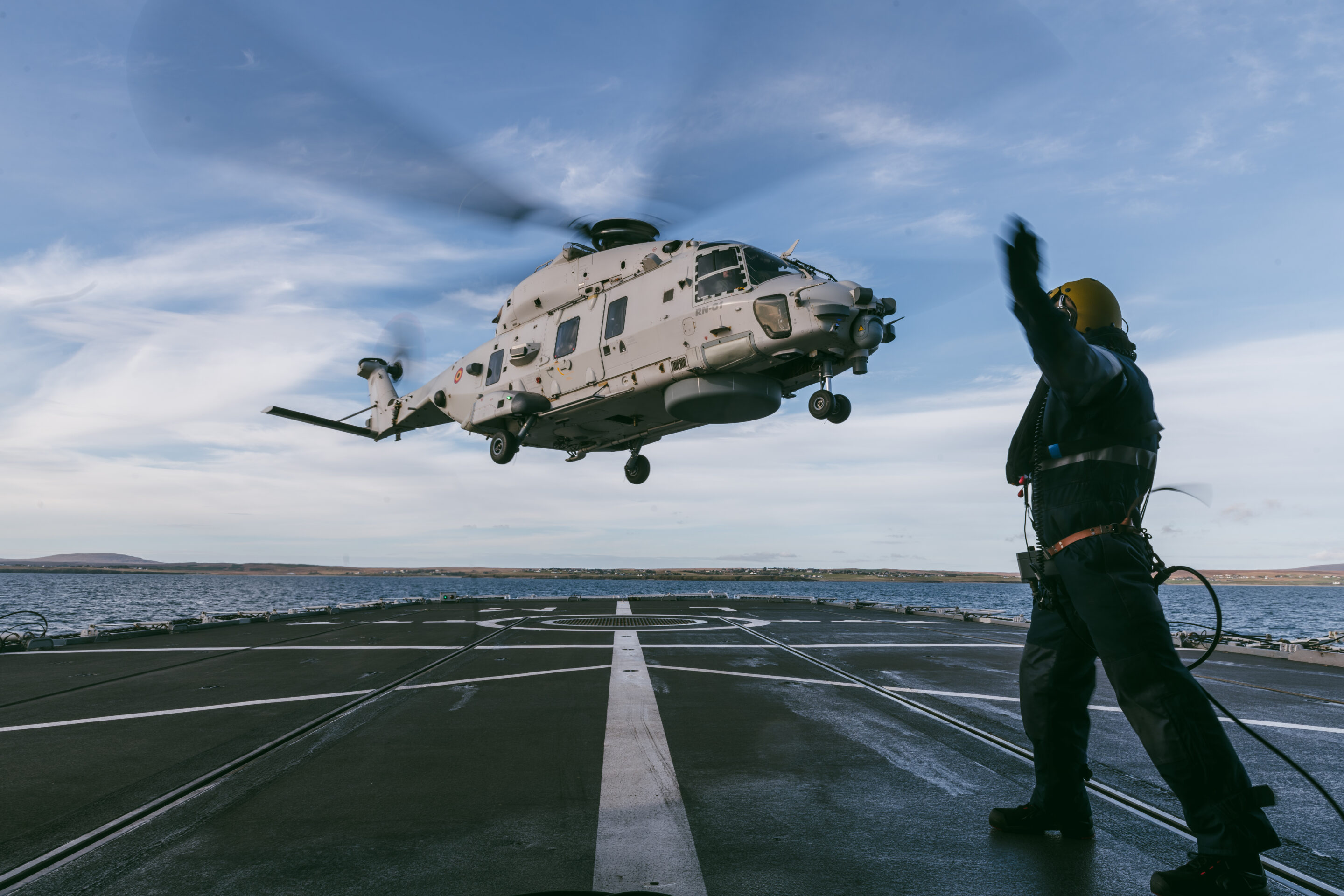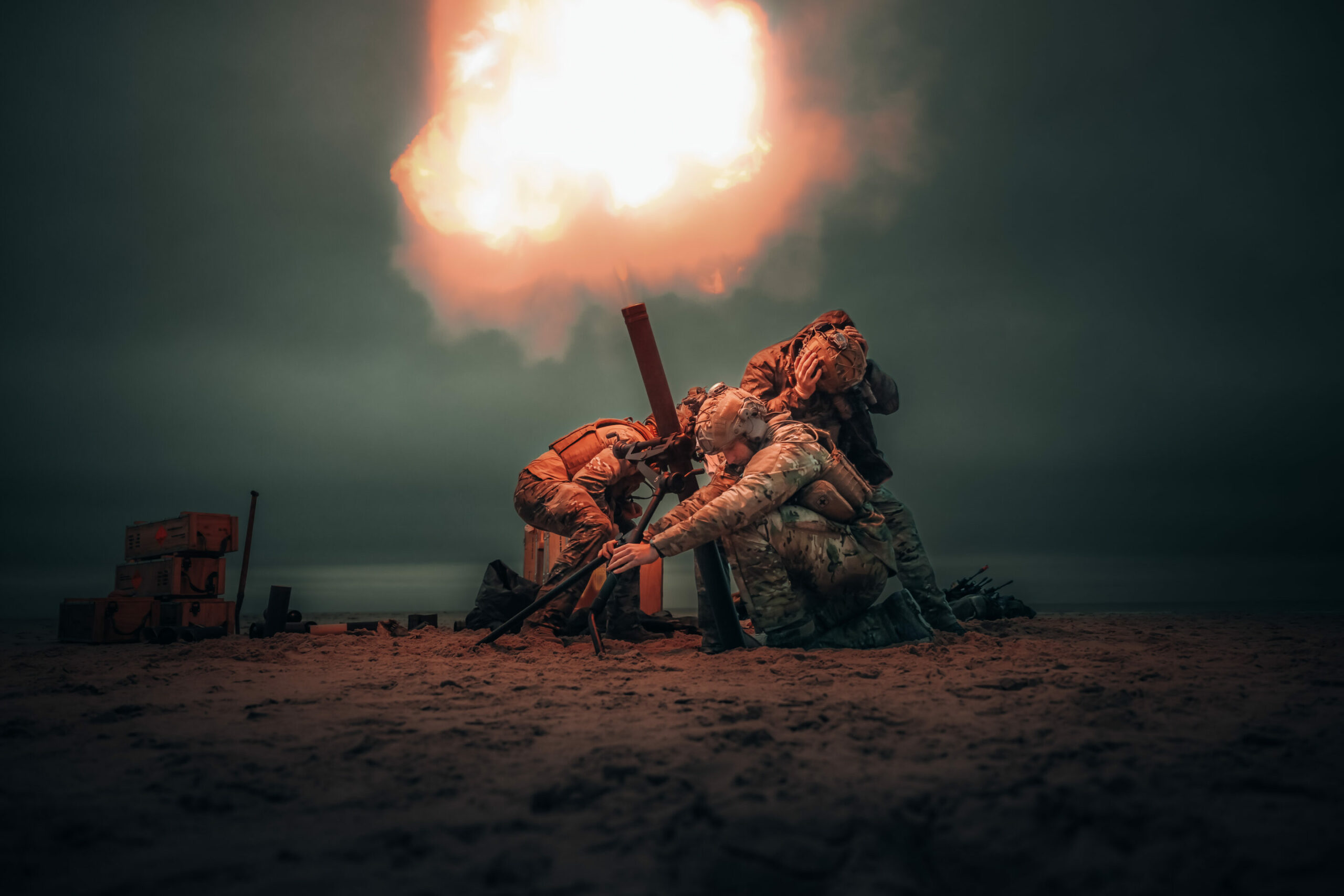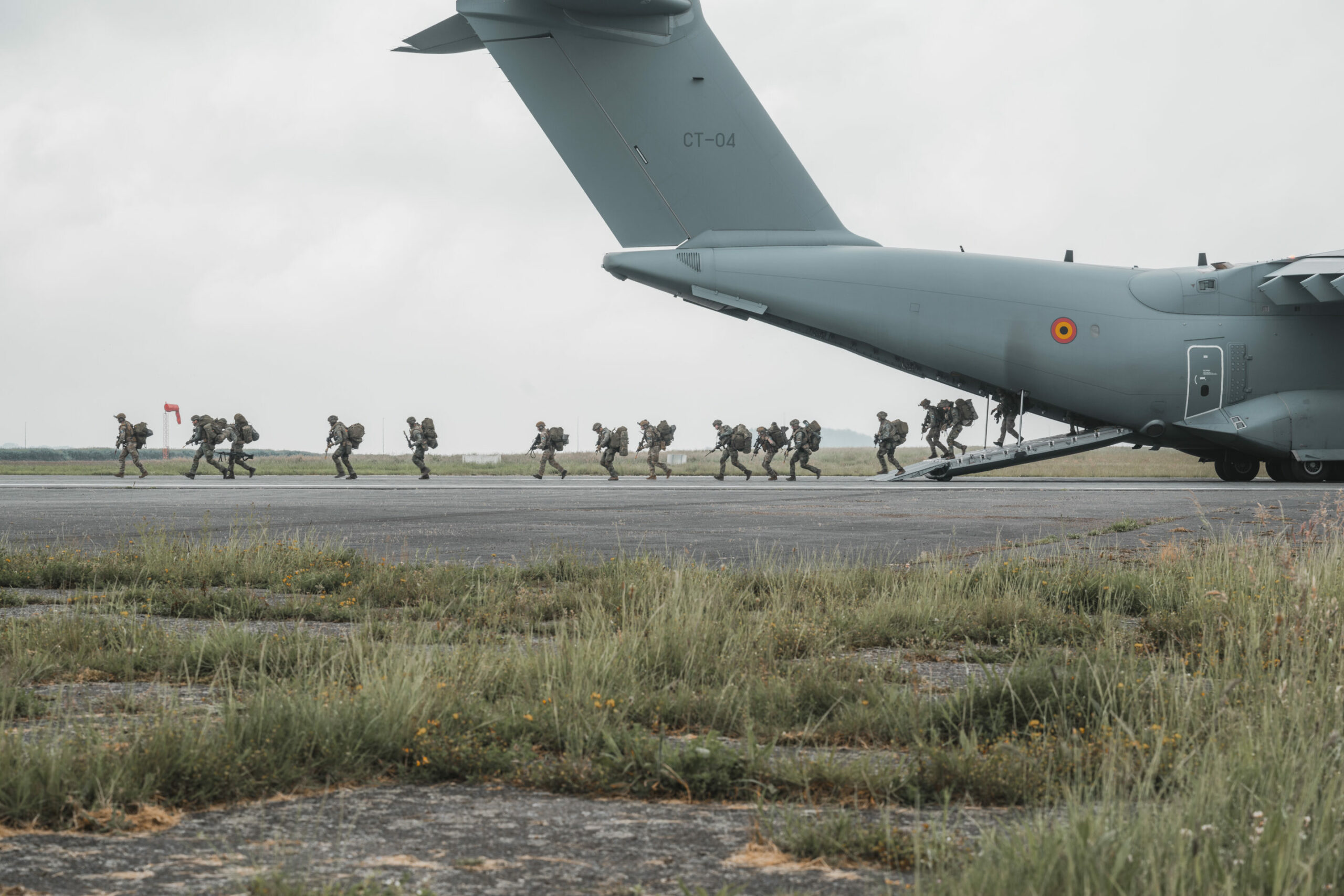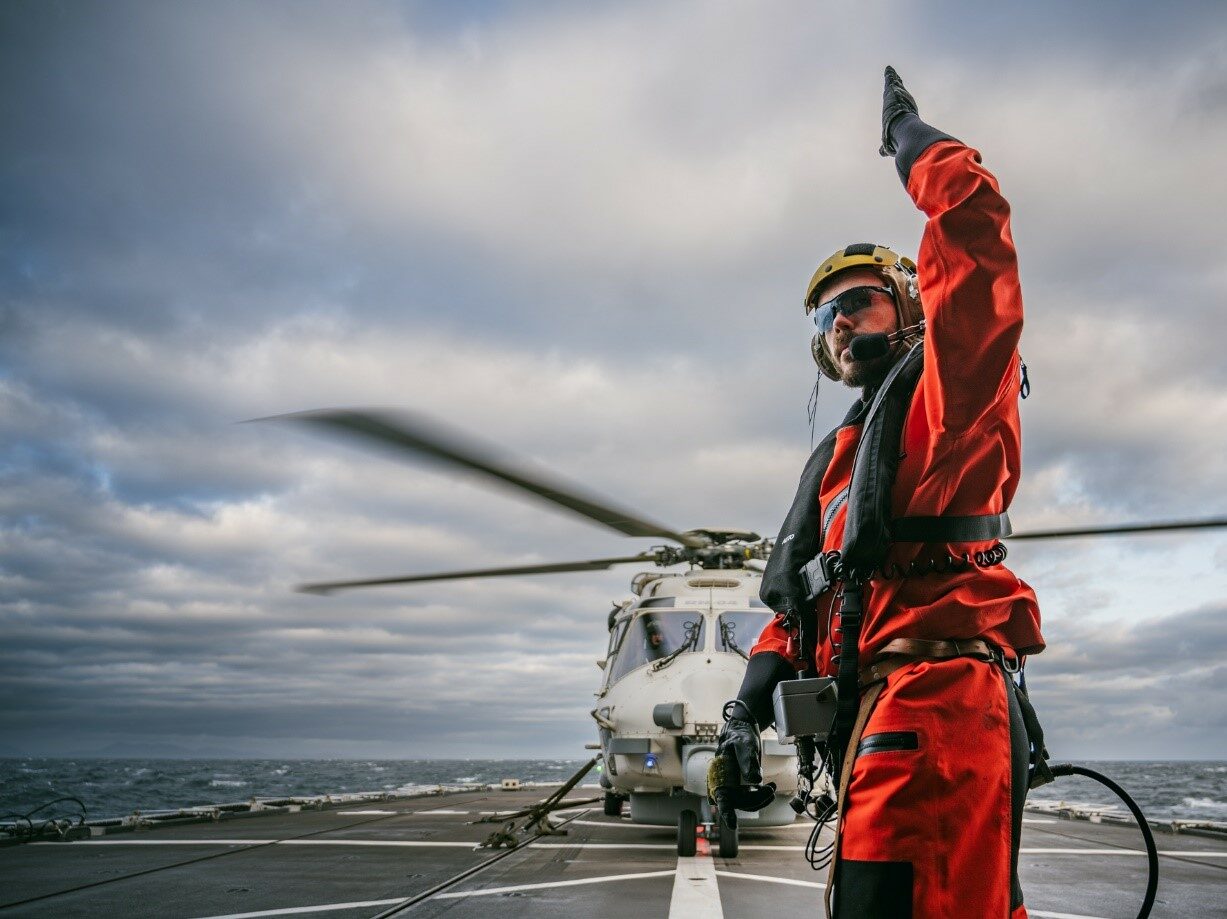Like its neighbours, Belgium has been woken from its post-Cold War slumber by the distant rumble of fighting on Europe’s eastern flank and by the realisation that the United States no longer has its back.
Security is now at the top of the European Union’s agenda, as leaders talk of boosting military spending, turbo-charging the defence industrial sector and even putting troops on the ground in Ukraine.
In early March, EU leaders agreed to a plan to offer €150 billion in loan guarantees to member states looking to expand their military potential, as part of a package aimed at spurring €800 billion in defence investment.
In Belgium, where defence investment plunged three decades ago, there is a belated recognition that the country must spend much more – and fast. The recently elected coalition government under Prime Minister Bart De Wever promised to ramp up military spending and boost numbers of military personnel. “If you want peace, prepare for war,” De Wever said.
Next year Belgium will introduce voluntary conscription. All 18-year-old girls and boys will be invited to join a reservist force for a year or longer. The first cohort of 500 recruits is due to start in the autumn of 2026.
Obligatory conscription was abolished abruptly in 1993. Other European countries including France followed suit in 1994. Those were halcyon days when some believed it was the end of history, a time when Pax Americana was a thing, and that war on the continent was unthinkable. Fast forward three decades and the mood among citizens as well as the authorities has shifted sharply.
Belgium’s National Crisis Centre (NCCN) is currently revising its assessment of risks to citizens. The list of risks is being expanded sharply from 30 to 118. Many of the new threats identified are linked to the changing geopolitical landscape and the possibility of conflict. For example, disruption to the country’s gas supply is one new scenario added to the list of potential threats. Another is political extremism from both the left and the right.
This summer the NCCN will launch an information campaign promoting its expanded list of threats. Meanwhile, it recommends that citizens keep an emergency kit in their house or in their cars, like the kits promoted recently by governments in Scandinavia, Germany and other countries (the European Commission has since followed with similar advice).
The Belgian emergency kit includes items to sustain citizens for a few days. It includes water, food, medication, a first aid kit, a battery-operated radio, a torch (ideally a wind-up model without batteries), a lighter, a Swiss army knife, documents including ID cards of all family members, and of course phone chargers.
In the car, drivers should remember to pack jump leads, a GPS device and/or maps, warm clothes for winter, sunglasses and sun cream in the summer, and games to keep children occupied.
Recruitment starts now
It’s a sunny Sunday in early March and the nearly 200-year-old Royal Military Academy, Belgium’s elite officer training institution next to the Cinquantenaire Park is hosting its annual open day.
There is a carnival-like atmosphere in the central courtyard of the impressive military campus which has hosted the RMA since the late 1960s. Pop music is blaring. Armoured personnel carriers are parked and played on by kids like climbing frames. There are machine guns on display under khaki bivouacs. Bomb-sniffing Malinois dogs are being put through their paces in front of an admiring crowd made up mostly of would-be applicant teenagers and their parents.
Many kids say they have been touched by the shocking images of war from Ukraine on the news.
“When I see what is happening, I am touched by the war, by the wounded. I want to do something,” says 18-year-old Clementine Rase. She wants to work in medical support and says she is prepared to be part of a peace-keeping force in Ukraine.
“The war in Ukraine is part of the reason I want to join the military. It’s a European country that’s been invaded. There’s a risk to all of us, to Belgium, and I want to defend my country,” says Lucas Schoutefen, a 17-year-old from Namur. He too says he is willing to go to Ukraine as part of a peace-keeping force.
Aydan Pauwels, 18 comes from a military family. “My grandad fought, my dad and my brother have done military service,” he says. He wants to join the academy and eventually to work in medical support.
“It’s important we as a country can protect ourselves. I’m prepared to go to Ukraine,” he says. His mother isn’t too keen. “It’s his choice but as a mum, it’s difficult, especially now when war is not so far from us. I hope it doesn’t lead to him being involved in any fighting. I hope it would just be about keeping the peace, not being involved in a war,” she says.
“Ever since I saw the movie Top Gun I have wanted to be a fighter jet pilot,” says Rohan van Waeyenberge, 16. He has wanted to join the military for over three years. “It’s what I want to do.”
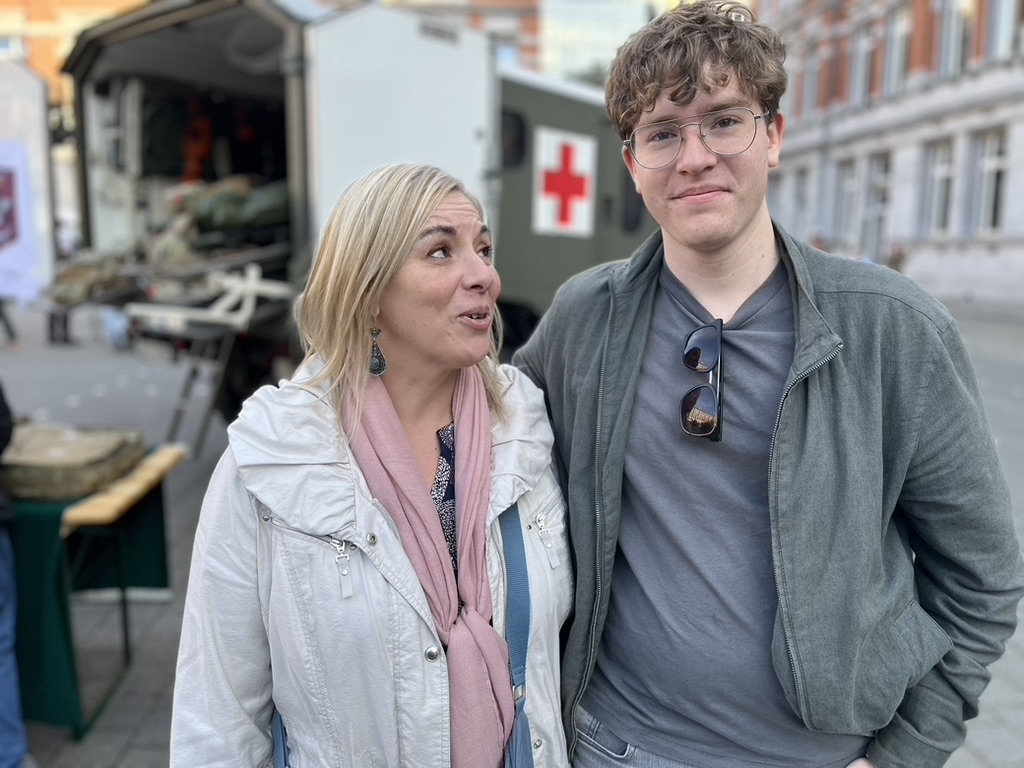
Aydan Pauwels and his mother
Watching the news about Ukraine, especially in recent months “makes me want to take action. Europe may be alone in a few years without the US to back us up. I want to be a part of our defence. I want to save lives.”
Arthur Romasco is a third-year student at the RMA. He is training to be a commando in the infantry, similar to Britain’s Royal Marines. He can complete his bachelor’s degree and begin a one-year master’s, so he could be called up in as little as a year to take part in the mooted Ukraine peacekeeping force (currently dubbed a ‘reassurance force’). “I’m not afraid. We are well prepared, and I will go if I have to do it,” he says.
There are currently 2,500 officers in Belgium’s armed forces. That will rise to 2,800 in 2026 but this is not specifically due to the war in Ukraine, says the Royal Military Academy’s rector, Major General An-Roos De Potter. While more and more people are interested in joining the armed forces, she says there is a long way to go. “We need to increase our readiness. It's a question of priorities,” she says.
Peace dividend
Defence was a high priority in Belgium and Europe during the Cold War. In the 1980s, Belgium spent three percent of its GDP on its military, but since the fall of the Berlin Wall, the defence budget has been slashed. At one point Belgium spent less than one percent of GDP on defence. The army couldn’t even afford fuel for its tanks and armoured personnel carriers (APCs).
Belgium spent 1.3 percent of GDP on defence last year, one of the lowest in Europe, along with Spain, Luxembourg and Slovenia. That was way below the two percent target set by NATO in 2014 for within a decade (23 of the 32 allies met that target last year, NATO says).
Recently appointed Defence Minister Theo Francken pledged to boost spending to two percent of GDP before the NATO summit in The Hague in June, when the alliance spending target will probably be raised.
“The time of rebuilding our defence has started,” he told Belgian ambassadors in February. “This will put an end to what I can safely call a ‘period of national disgrace.’” He says Belgian spending last year included 0.16% of GDP on support for Ukraine, leaving actual spending on the armed forces at less than 1.2%. Belgium also spent 15% of its defence budget on major new equipment, the lowest share within the alliance, according to NATO figures.
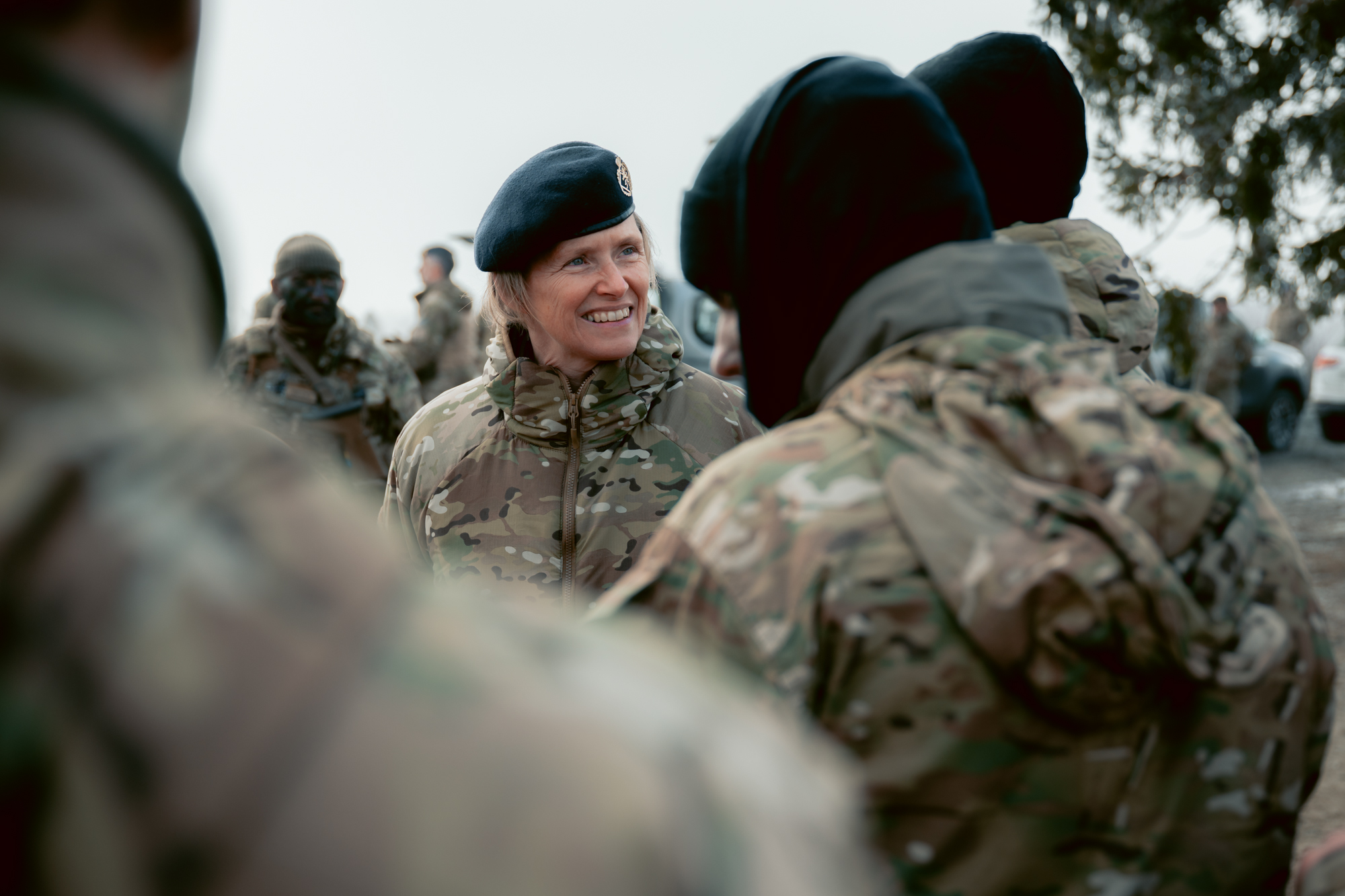
Royal Military Academy’s rector, Major General An-Roos De Potter
As the US threatens to pull support from Ukraine, and even pull out of NATO, Europe’s leaders are looking at raising their average spending to well over three percent. Some say it should be four percent.
Whatever the figure, it won’t be easy for Belgium to get spending back up to where it was in the 1980s.
There is a target to expand the number of military personnel to 29,000 by 2030 - at present it has 23,000. But this is still far smaller than in the 1980s, when the military had 43,000 career soldiers as well as 80,000 conscripts.
Arms and armour
There are also plans to increase investment in equipment including buying more airplanes, tanks, artillery, air defence and drones, so Belgium can provide effective strategic support across the armed forces in the air, land and sea.
In air defence, there are plans for layered air defence systems to protect against a range of aerial threats. This includes the acquisition of additional F-35 fighter jets, supplementing the 34 already ordered. At sea, the Belgian Navy is set to add a third frigate, bolstering maritime security and fulfilling NATO commitments. Other initiatives include the acquisition of six minehunters in collaboration with the Netherlands.
On land, there are plans to strengthen the existing motorised brigade through initiatives like the CaMo land forces cooperation with France. In cybersecurity and space defence, increasing investments have been made to strengthen digital resilience and satellite surveillance, notably through partnerships with NATO and the European Space Agency. As with many European countries, Belgium’s army is currently heavily dependent on the US, especially for satellite communications.
Filling the gap
Analysts say that European countries will have to coordinate their efforts to fill the gap left by the US. They say it will take years to replace all the US communications infrastructure. Countries need to put money aside for secure communications, intel, air defence, and deep strike capabilities potentially to attack targets deep in Russia, they argue.
This drive to improve Belgium’s readiness for a military threat predates recent events in Ukraine and Washington. It has as much to do with demographics and money.
The military budget was frozen in nominal terms from 2010 until 2020, which effectively means it shrank in real terms due to inflation.
In personnel terms, the military shrank partly because there was a spike in the number of soldiers reaching retirement age. “This wave was entirely foreseeable, but nothing was done to mitigate the situation until the wave hit a few years ago,” says Sven Biscop, a military analyst at the think tank the Egmont Institute, and a professor of international relations at Ghent University.
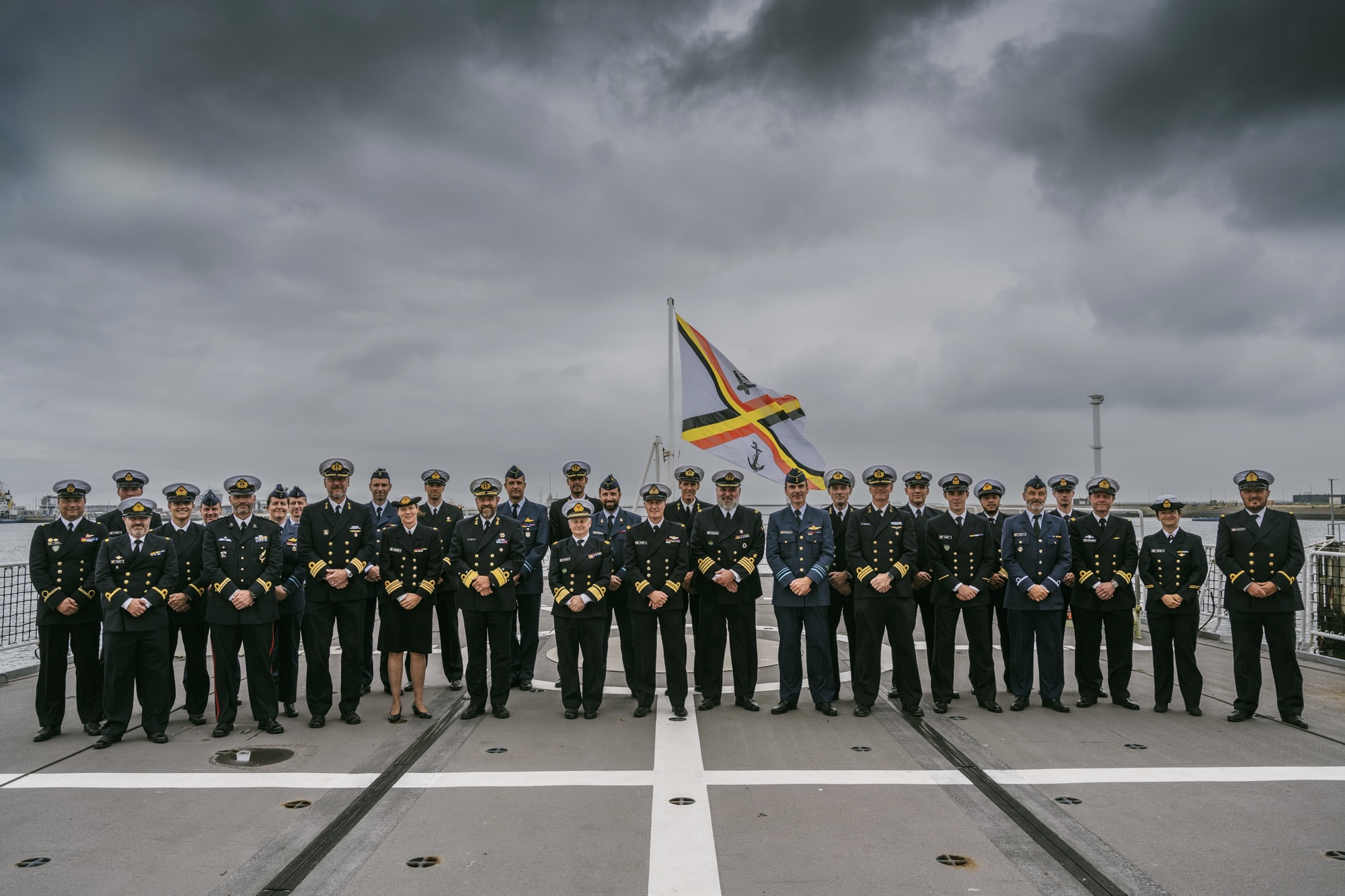
Officers on deck
The personnel problems in the Belgian military go back to the scrapping of conscription in 1993: unlike its neighbours, Belgium’s move to abolish national service was abrupt - there was no phase-out to the termination of 80,000 conscripts.
The Belgian Defence Ministry admits that since 2014, the number of Belgian soldiers, including those in the air force, has declined due to a combination of retirements, early departures during formation and “insufficient recruitment to offset these losses,” but adds that “recruitment has gone up in recent years and this trend will continue,” it said in written responses to questions.
Belgium has already said unofficially it will join a ‘coalition of the willing’ being spearheaded by France and Britain aimed at supporting Ukraine after a possible peace deal with Russia. Its deployment capacity for troops is not huge but it could be part of a force, if one is created.
It already has around 150 troops in Romania as part of a NATO-enhanced forward presence there. Those troops could be moved to Ukraine. Belgium could also send a battalion (usually between 500 and 1000 troops) on a rotation basis with other allies, according to analysts.
And it could offer up an air component. Belgium currently operates approximately 45 F-16 and seven F-35 fighter jets, made mainly by US arms manufacturers including Lockheed Martin, Northrop Grumman and Pratt & Whitney.
Belgium has also placed orders for 34 F-35s for delivery between now and 2030 and there are no plans to follow Portugal, which recently cancelled orders for F-35 after they were suspected of having a ‘kill switch’ enabling the Pentagon to prevent its use even after its sale to allies – a prospect that has alarmed European countries already spooked by the Trump Administration’s backpedalling on its NATO commitments and hostility to Europe.
Industry boost?
Belgium’s own defence industry is small yet it has expertise in many areas that could be useful not only to the country’s military but to other NATO partners eager to wean themselves off US weapons makers.
Belgian defence firms are active in niches like aviation, ammunition, small arms manufacture, communications, cybersecurity and drones.
For example, Thales Belgium operates across defence and security, aerospace, space, and digital identity and security sectors. Belgian Advanced Technology Systems (BATS) was established in 1984 and is located in Liège’s Science Park. It specialises in designing, developing, and supplying advanced technology solutions in defence and homeland security.
Mecar is based in Petit-Roeulx-lez-Nivelles. It makes ammunition, grenades and anti-tank canons. KNDS Belgium also makes ammunition. It was founded just before the Second World War.
FN Herstal is Belgium’s oldest weapons firm, founded in 1889. It builds assault rifles, machine guns and other small arms, as well as ammunition.
These firms stand to benefit as Europe rearms. Some banks refuse to lend to firms in the arms business on ethical grounds, but this is changing. “Belfius bank has changed its position on this, saying it is now willing to grant loans to Belgian defence firms,” says Pascal Acket, a defence expert with the Belgian business technology lobby Agoria. “The mindset is shifting. They see a lot of money coming.”
The EU has pledged €150 billion in loan guarantees to EU countries looking to expand their military potential, as part of a package aimed at spurring €800 billion in defence investment. “This fund should be a game-changer for the defence sector, but there are still questions about how firms can access the loans. All Belgian defence firms are SMEs, so finance is a big issue for them,” Acket says.
So is local politics: Belgian regions decide on the granting of export licences to local firms and ethical concerns about the arms trade mean that Flanders has often been unwilling to help them sell abroad.
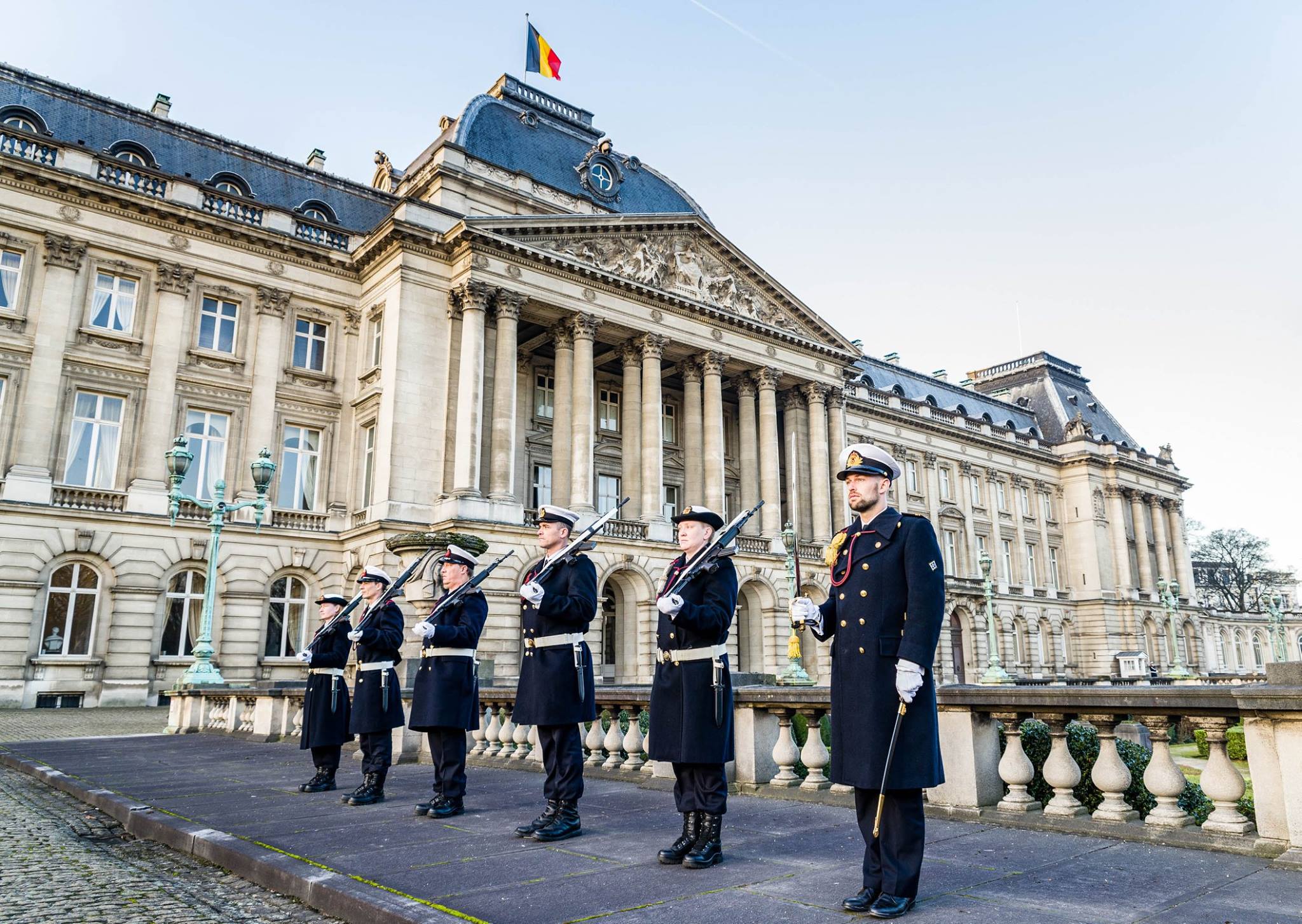
Palace at the parade
But this is changing. The new Flanders Minister-President Matthias Diependaele has pledged to review his government’s position regarding export licences to arms firms. There are also moves afoot to set standard export rules across the country.
Acket says more needs to be done at European level to help Europe’s arms manufacturers. “There needs to be an EU initiative to create a single market for the defence industry. Small Belgian firms should be able to sell around Europe without having to seek licences. It would be good for everyone, reducing costs and bureaucracy, and helping European buyers to buy European,” he says.
Finding the money
There is also the question of how to pay for the defence splurge. Raising defence spending implies tax hikes or cuts elsewhere in the budget. A recent Egmont paper, 'Tanks Versus Pensions? How European NATO Countries Fund Defence and What Belgium Can Learn', says Belgium will likely have to pile on public debt to catch up.
"The era when Belgium could prioritise other policy areas while neglecting security is over," the paper says. "The 'butter' of the welfare state still exists, but it now requires protection. Security is the foundation of a stable economy, and the cost of failing to deter threats far exceeds the price of prevention."
While the EU has eased its debt and deficit to allow more defence spending, Prime Minister De Wever has poured cold water on the scheme, warning that the proposal is not "free money".
"A euro remains a euro," he said in March. "Just because Europe is flexible does not mean that the deficit does not exist." However, the challenge remains for Belgium: it must find the money to spend much more on defence. And it must do it fast.

